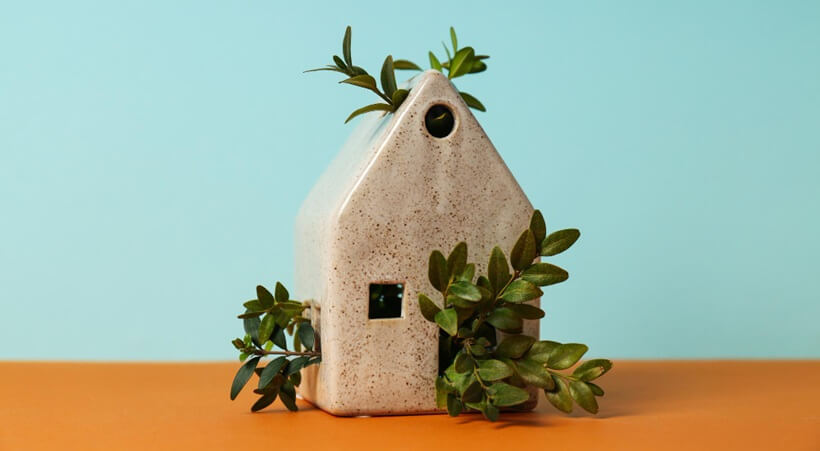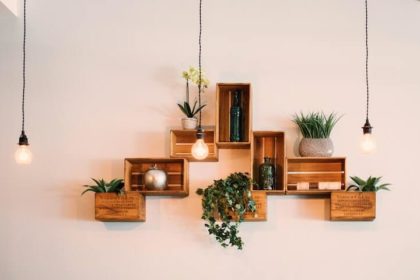Around the world, environmentalism has grown in importance across a wide range of sectors and businesses, and in recent years, it has become a strong motivator for homeowners. One of the best ways to contribute to environmental preservation is to make eco-friendly decisions in your life and at home, but becoming green can also have some significant advantages. This is a fantastic method to reduce waste and protect the environment, but it’s also a great way to add lovely décor to your house and save money. Going green might save you money both now and down the road, but making eco-friendly adjustments can be costly. You may believe that going green is an unattainable project if you’re on a tight budget, but it is actually fairly possible with careful planning and preparation. Since spring is the best time of year to build a house, let’s look at some ways to create an environmentally friendly home without going over budget.
Look for qualified contractors
First things first: hiring qualified contractors who can produce an extensive, intricate design and building plan is the first step. You must collaborate with seasoned experts who have a long history in green construction, are familiar with the nuances of the industry, and stay abreast of emerging trends. This is crucial for a number of reasons that can assist ease the procedure, but above all, it can help you avoid unnecessary money waste at the moment.
If something goes wrong during the planning and preparation stage, you will have to pay for it yourself. You may have to pay for expensive reworks if the contractor fails to incorporate particular green solutions that you requested in the design. Suddenly, you will have to pay a lot more for a construction project that was once affordable.
Instead of falling into this trap, be sure to thoroughly screen contractors. To get the most out of your investment, carefully consider their references and prior work before hiring seasoned green contractors.
Select inexpensive renewable resources
Selecting the appropriate building materials is crucial when creating an environmentally friendly home. Straw bales, bamboo, rammed earth, hempcrete, grasscrete, recycled plastics, and many other environmentally friendly building materials are transforming home construction these days. The ideal designers and constructors will understand not just your budget and aesthetic preferences, but also which materials are most appropriate for your plans and objectives.
Utilizing these materials throughout the building process is crucial, even though some are ideal for insulation and others are just pure construction materials. In addition to supporting environmental causes, using environmentally friendly building materials will help you create a more sustainable home, particularly in terms of cost.
Look for more affordable solar system prices
Planning your new home with access to renewable energy is crucial because it’s a key component of a green modern home. Purchasing a solar system is usually the most economical course of action, but making the switch to solar power can be expensive. You might not even have the initial funds to purchase a solar system for your new house, but the long-term benefits might make the investment worthwhile.
But in today’s online marketplace, you can always count on finding trustworthy companies selling solar panels for sale together with exclusive offers and discounts that you can easily fit into your budget or a long-term payment schedule that suits you. Do your homework and search for better offers on solar panels, solar equipment such as batteries and inverters, and solar installation rather than accepting the first offer you see.
Make an immediate investment in insulation
Naturally, it’s not only about getting access to clean energy; passive conservation can also lower your energy costs. It’s critical to make universal insulation investments as soon as feasible to start saving immediately and prevent future expensive reworks.
To help keep the area naturally warm or cool depending on the season, ask the contractor to include insulation for the walls, floors, and attic in the budget. You can also choose insulated doors and windows, including double-glazed windows. You may reduce unnecessary heating and cooling costs all year long with an insulated home.
Increase your energy efficiency gradually
Last but not least, improving your home’s energy efficiency over time is one of the biggest advantages of making it eco-friendly. You can easily implement more eco-efficient solutions like smart technology, LED lighting, IoT-enabled gadgets, and energy-efficient appliances because eco-friendly homes are constructed with energy savings in mind.
Note that you are not required to complete all of this at once. If it makes more financial sense for you, start implementing energy-efficient solutions one at a time after construction is complete. Keep an eye out for greater offers on appliances or LED lighting in quantity, as some brands offer fantastic discounts on larger purchases.
It’s your turn now
One of the best choices you can make is to build an eco-friendly home, but when you’re on a tight budget, you need to take all the necessary precautions to reduce danger and waste. By following these guidelines, you may create a green home that will help protect the environment and provide you with long-term financial security.





